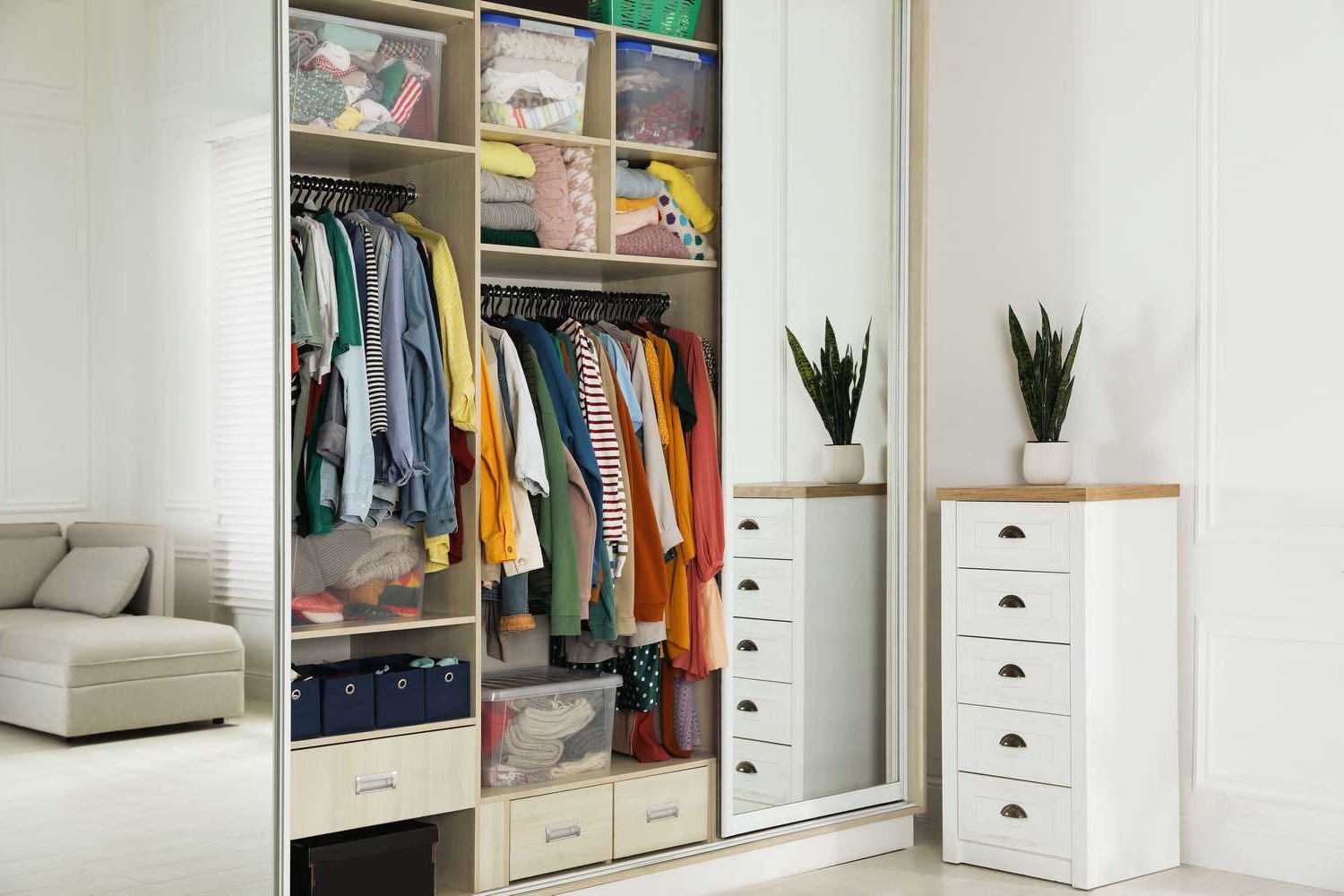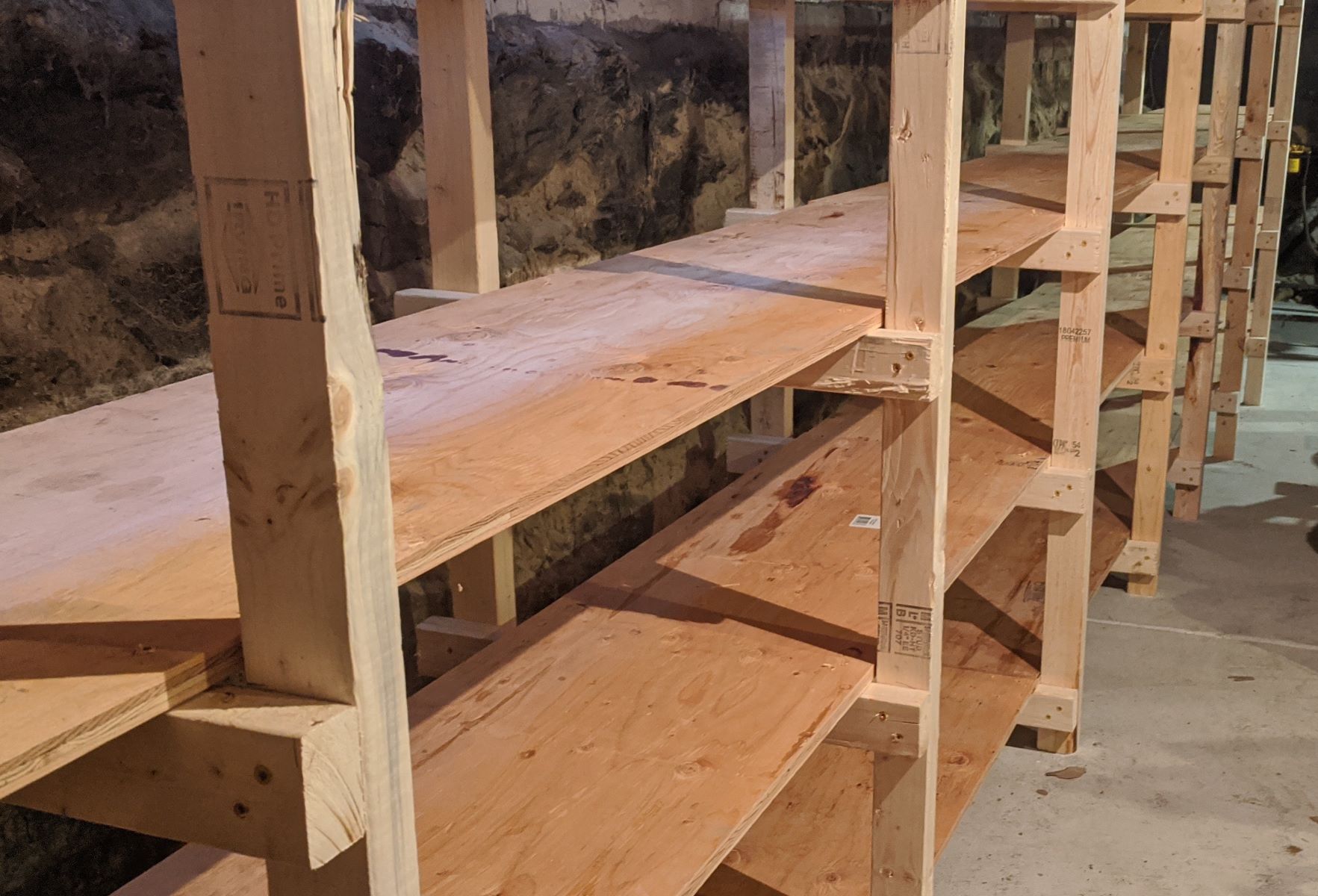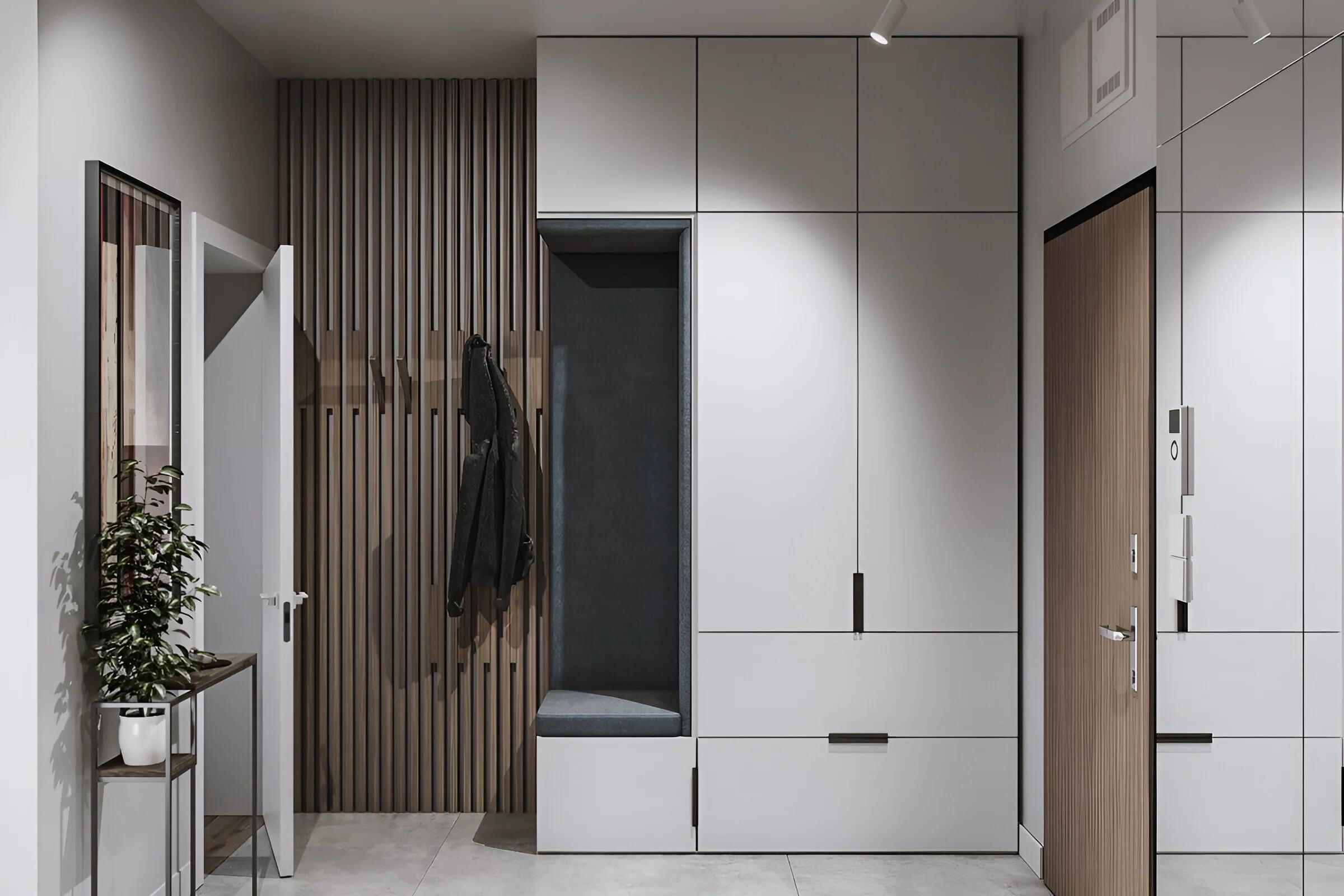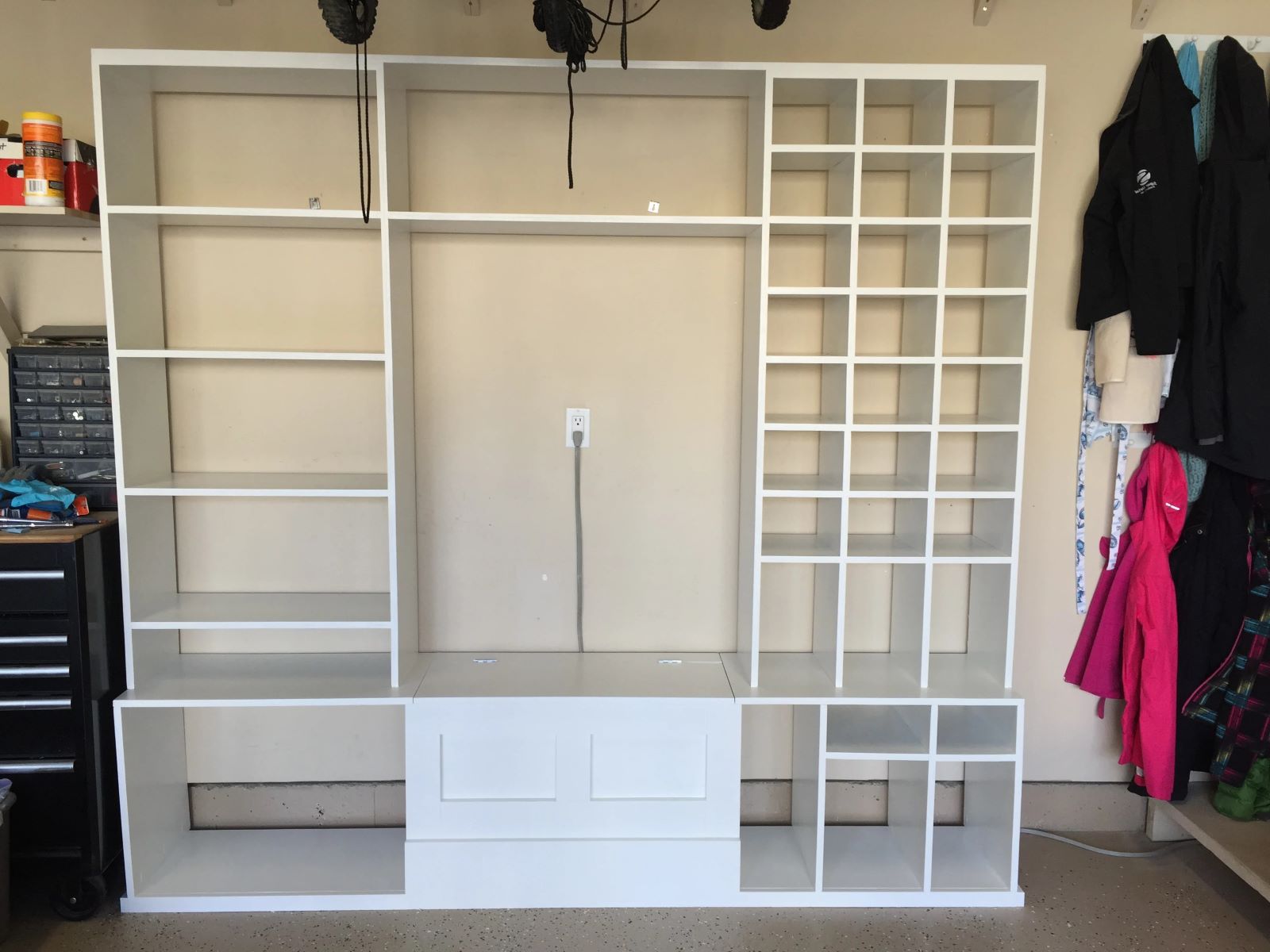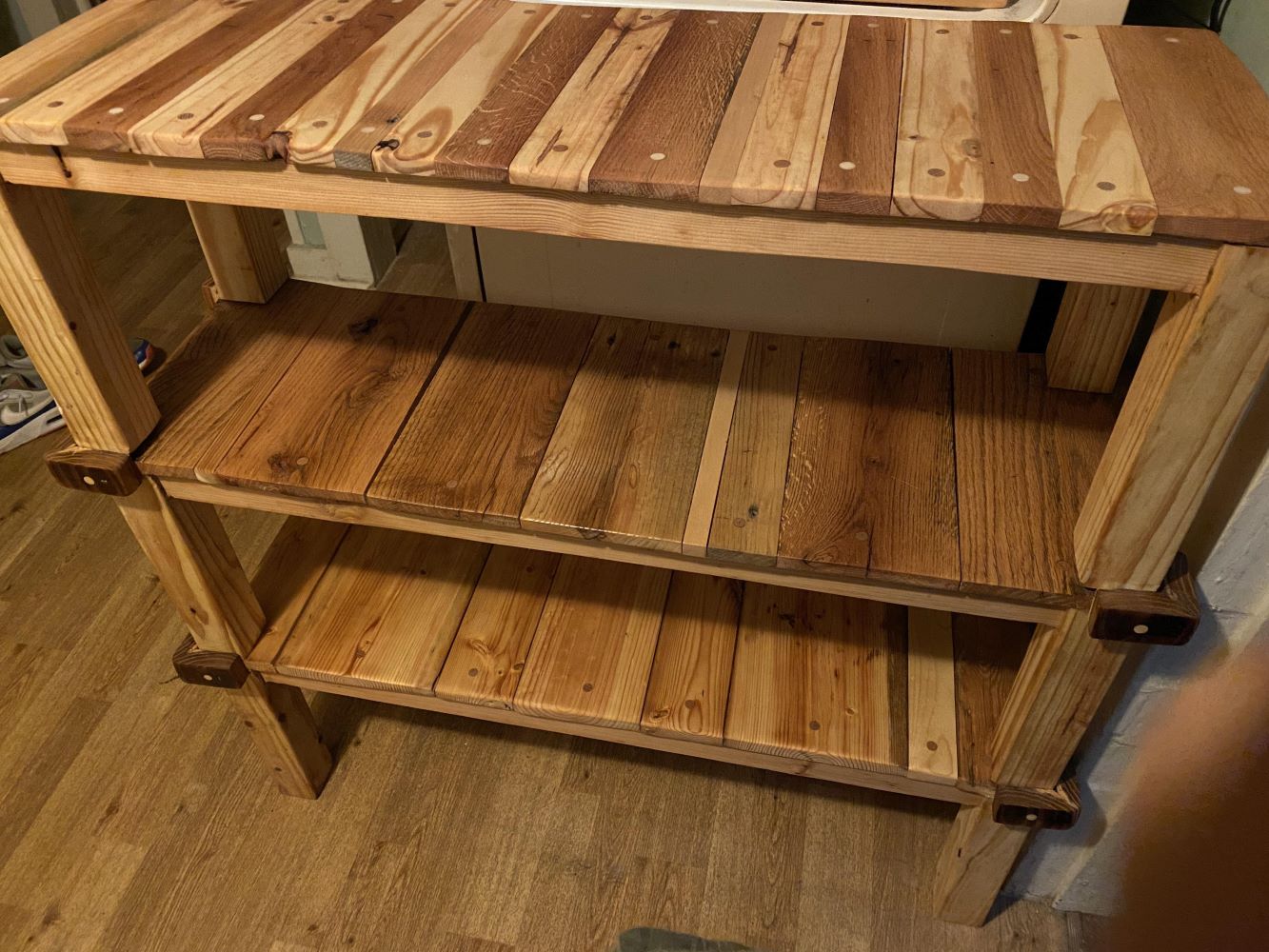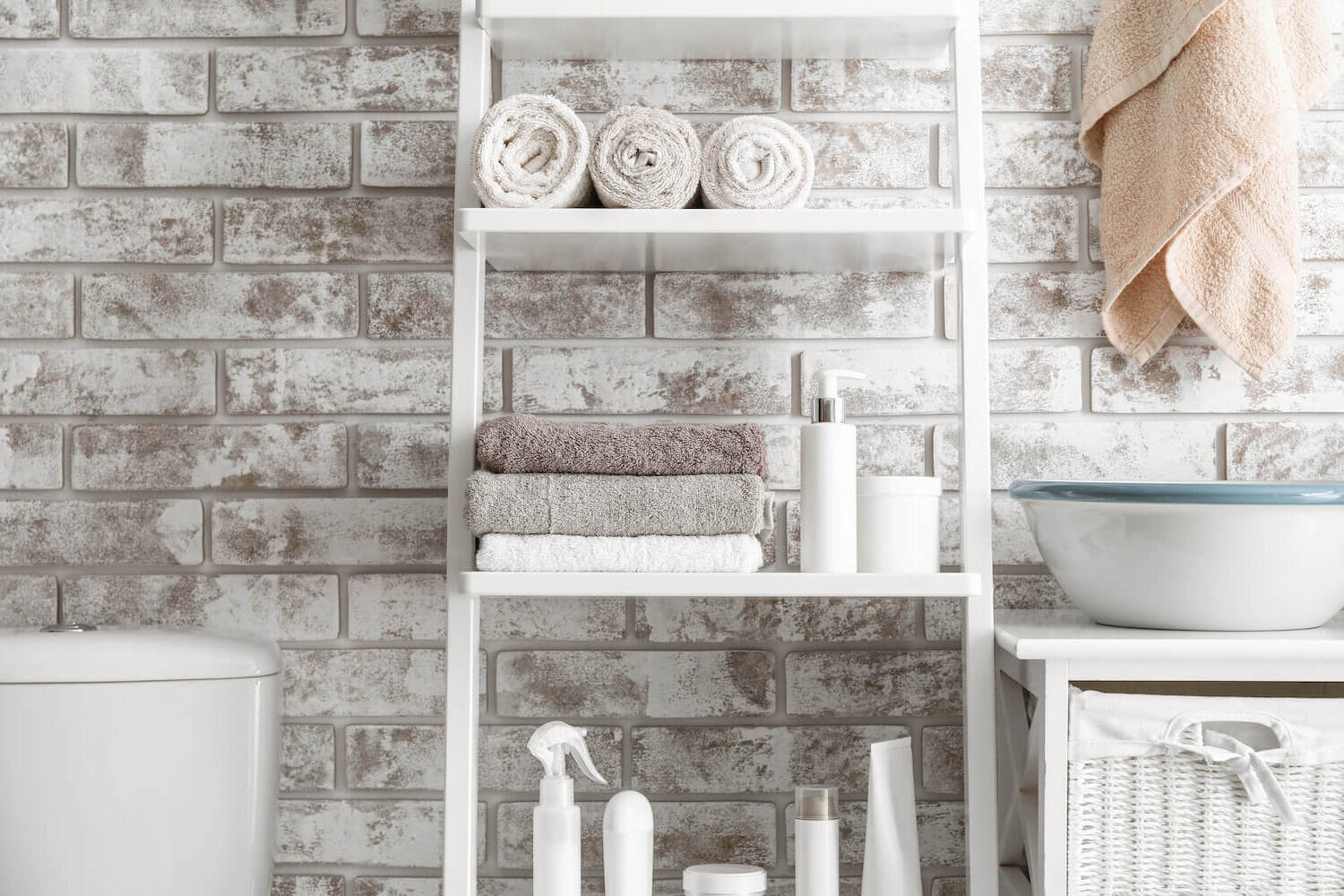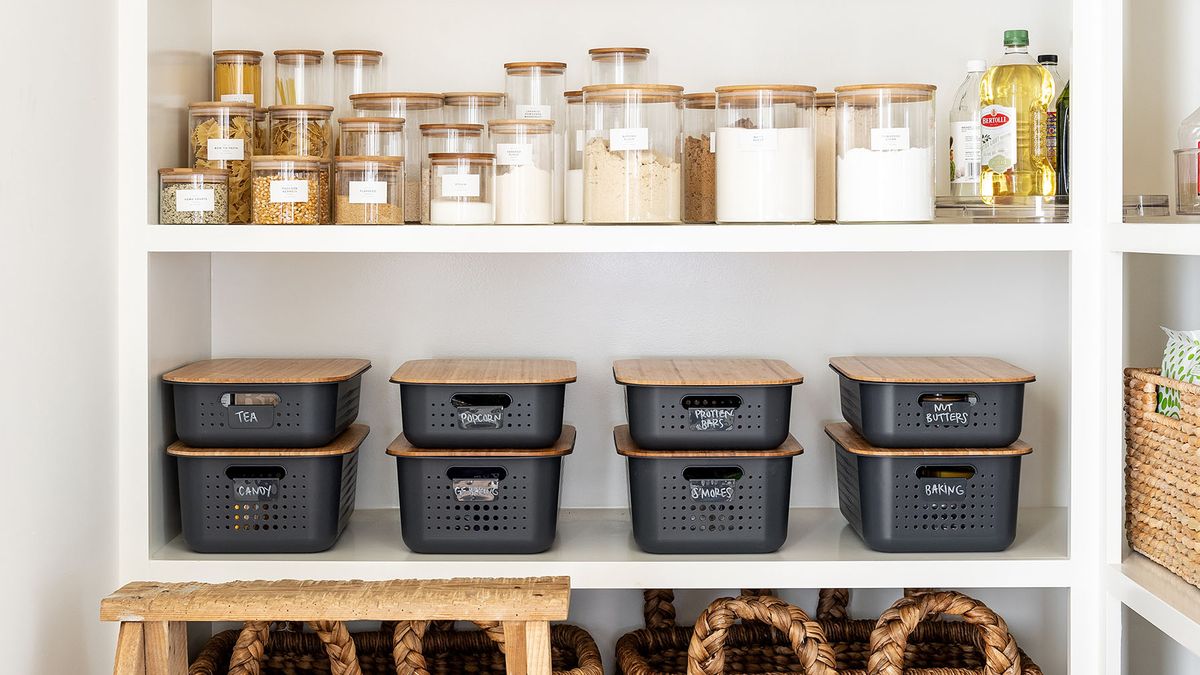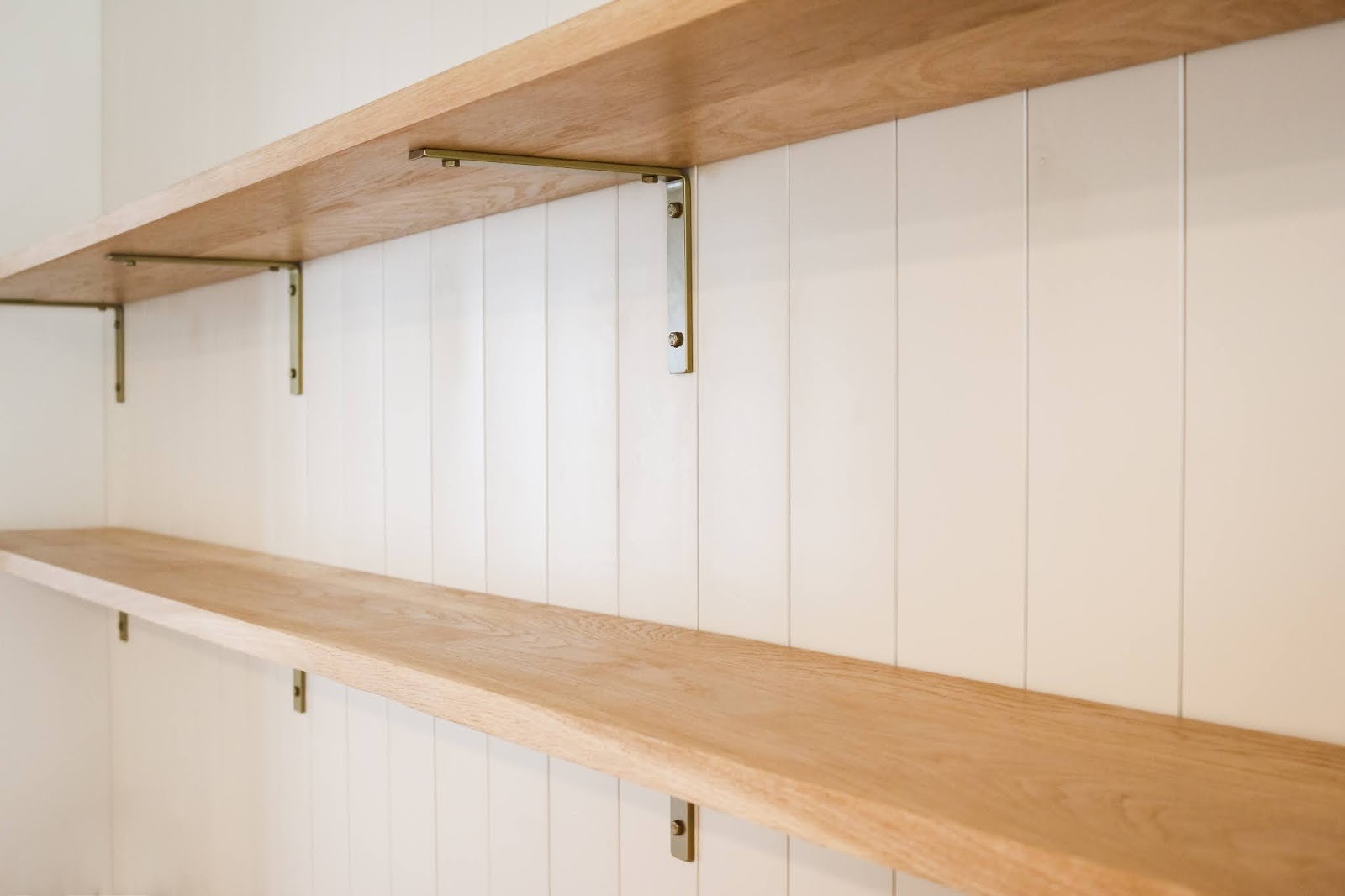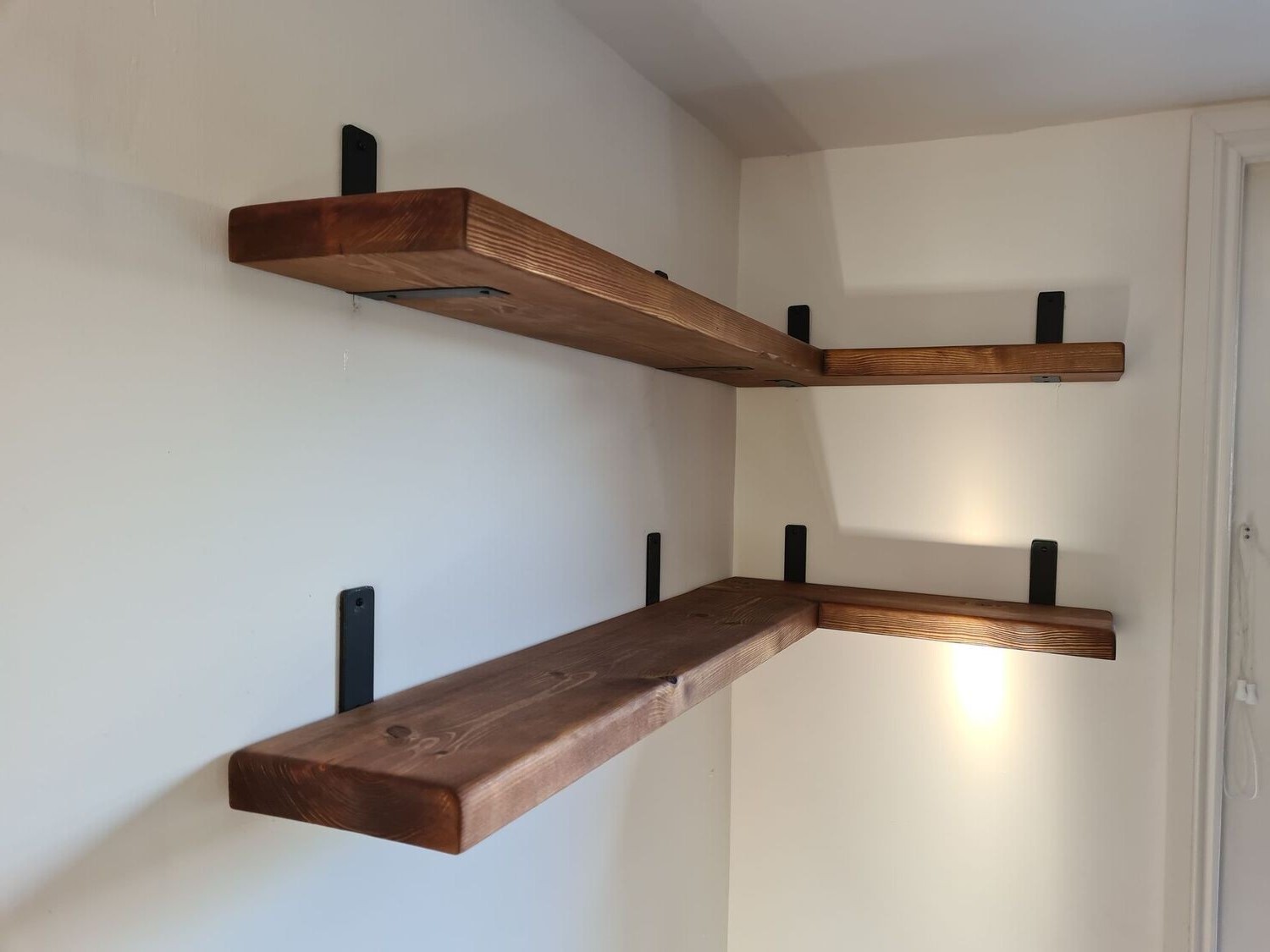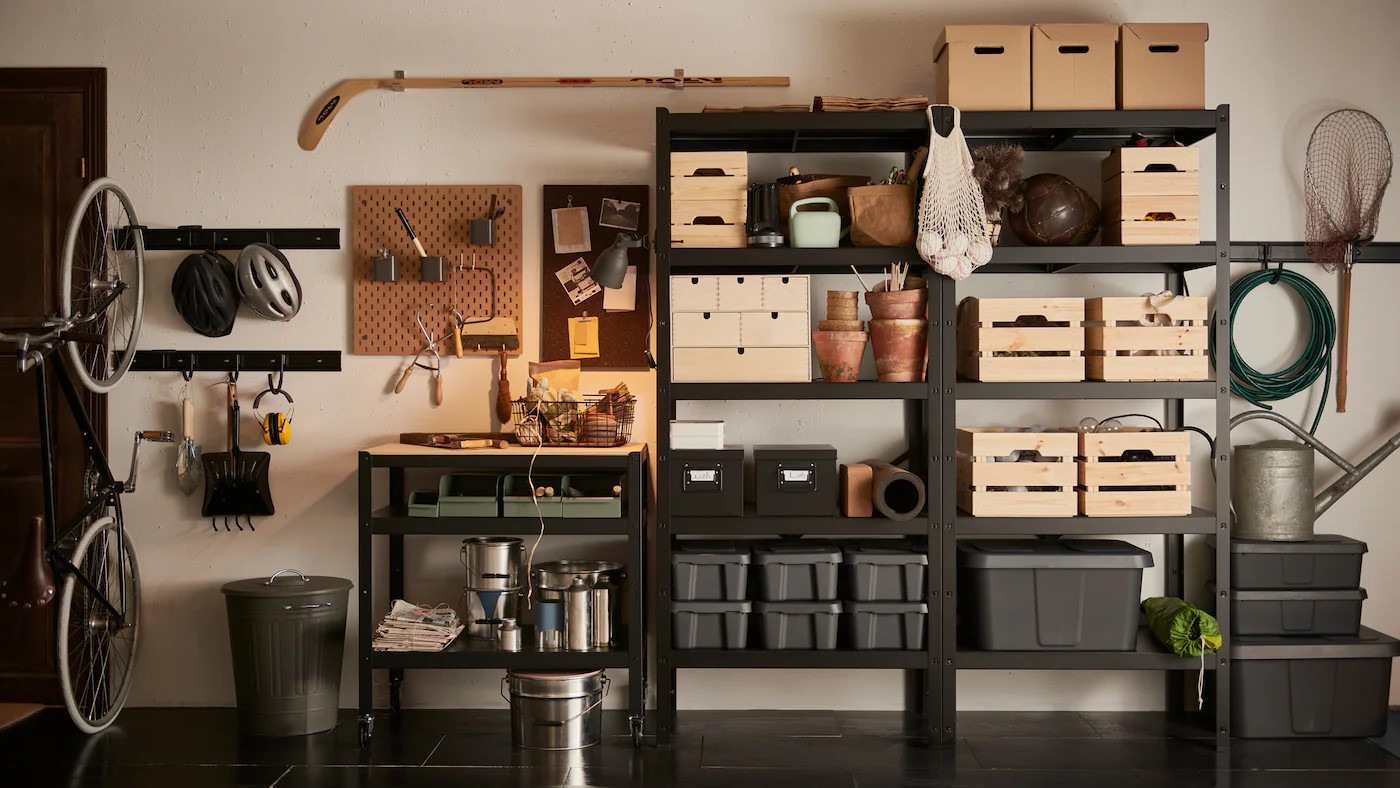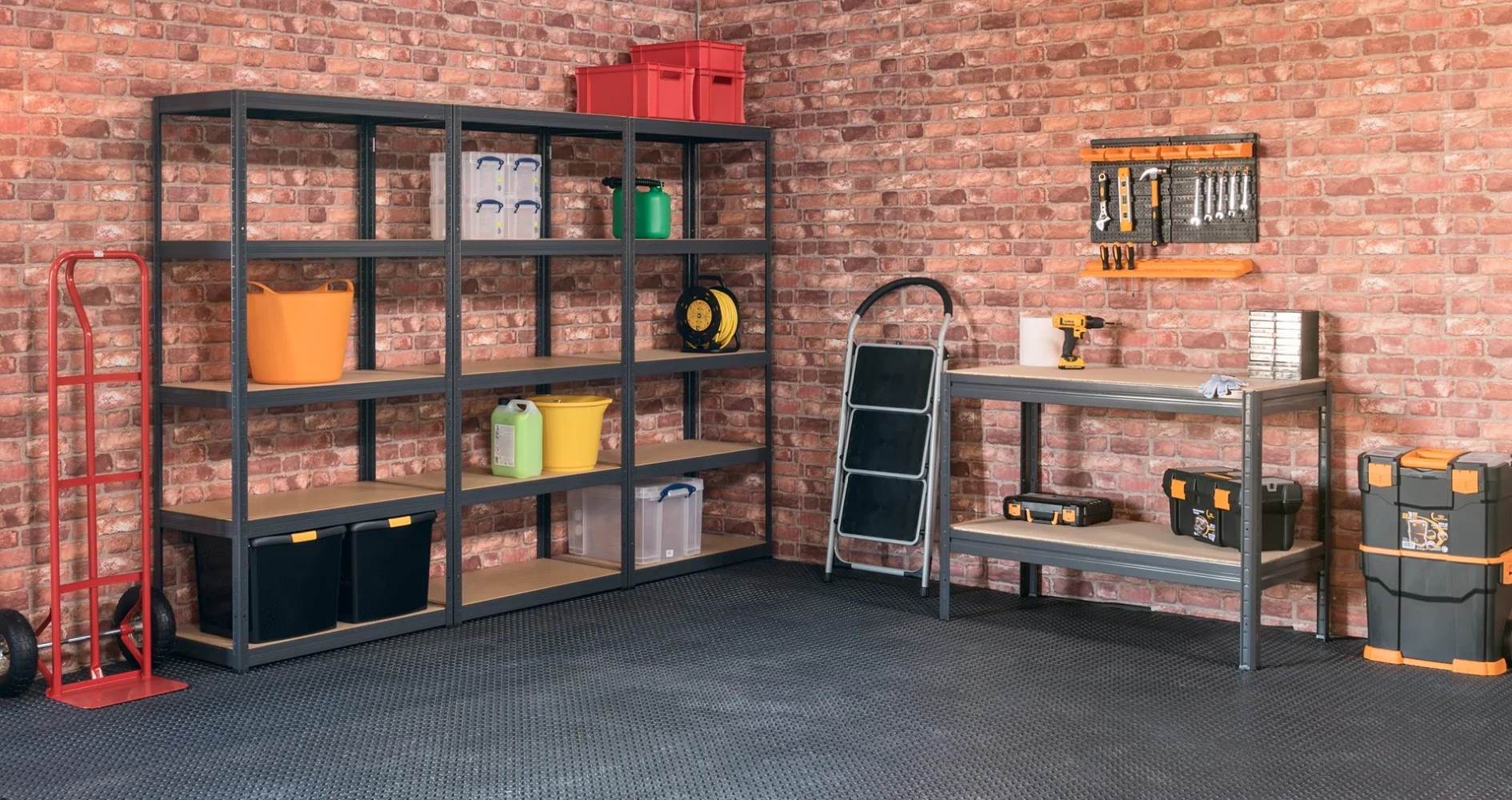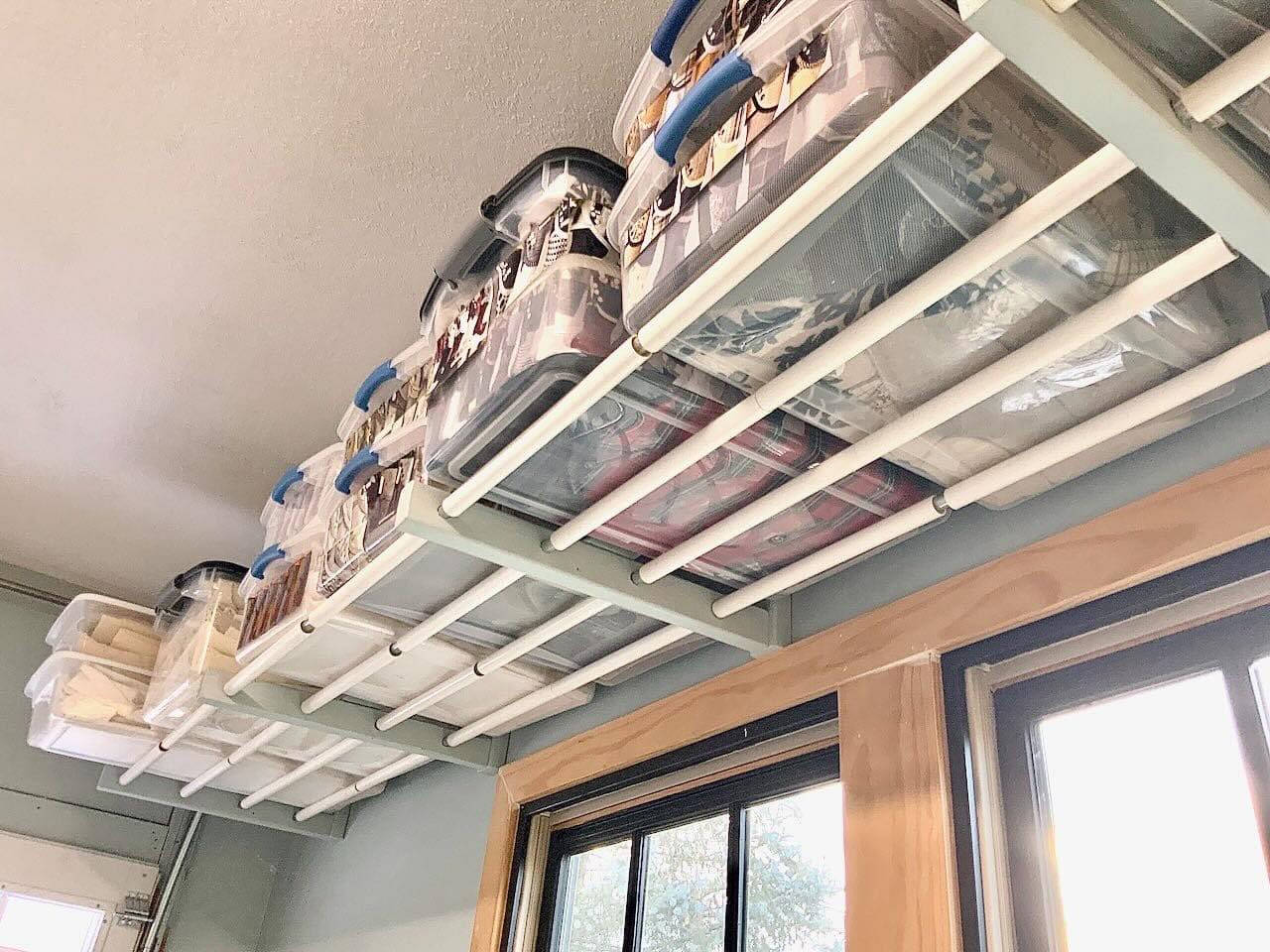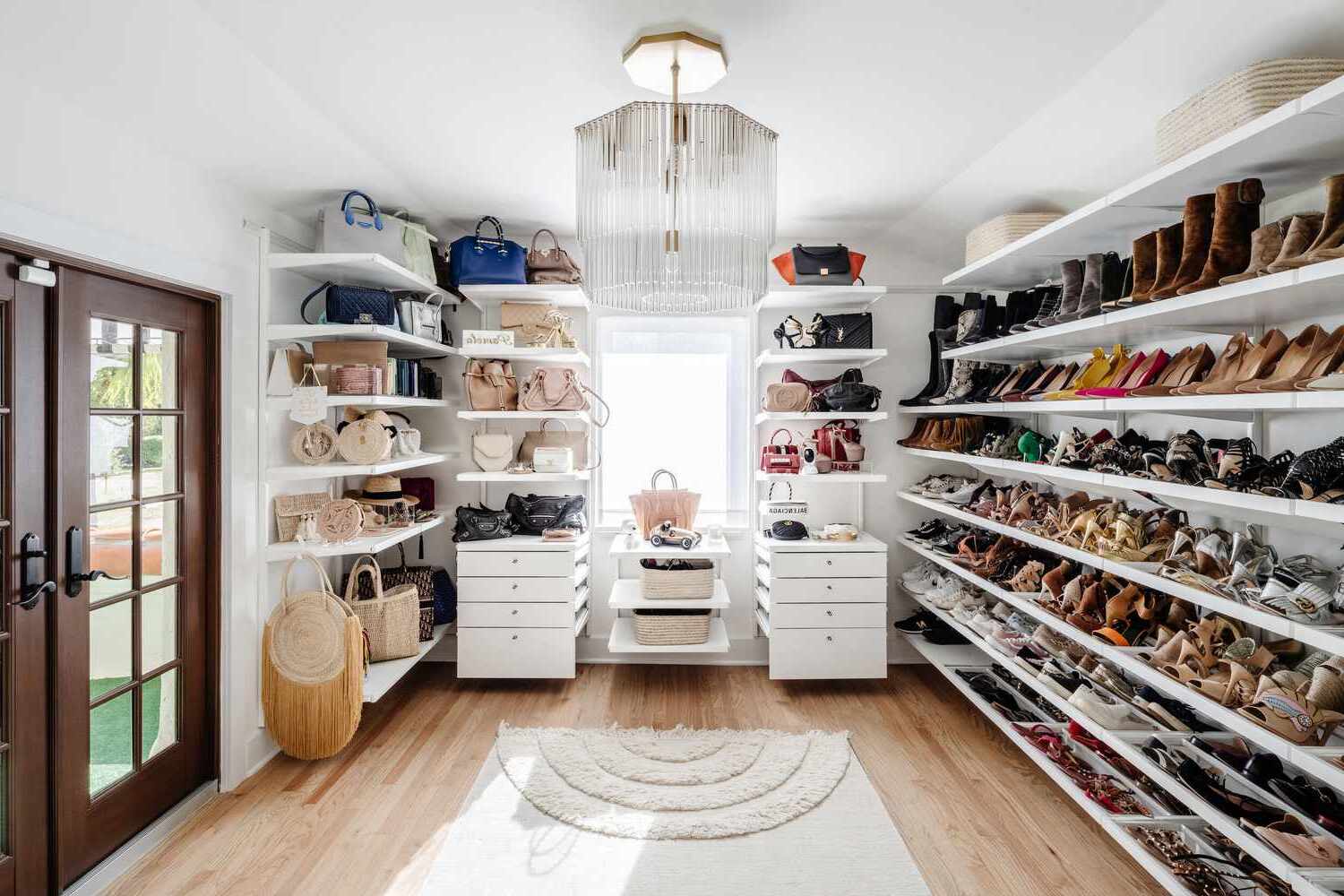Home>Home & Furniture>Storage Space>DIY Shed Shelves: Organize Your Storage Space With These Simple Steps
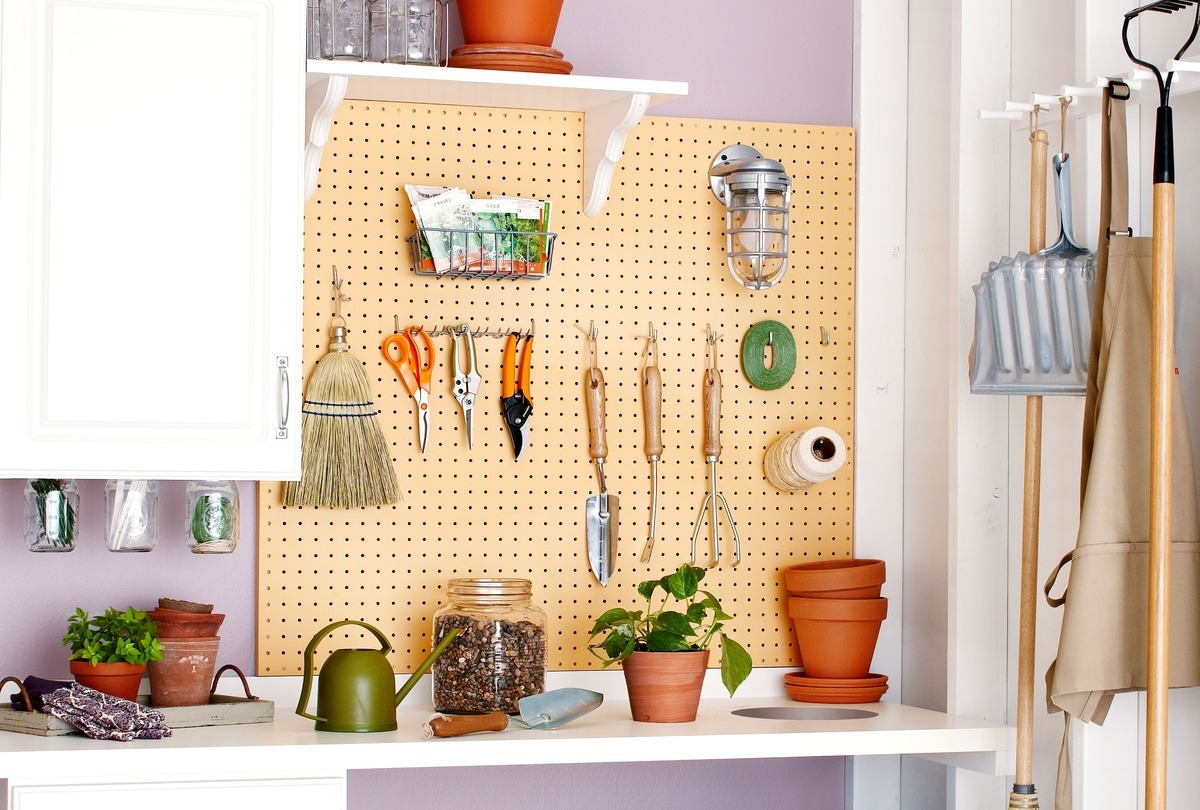

Storage Space
DIY Shed Shelves: Organize Your Storage Space With These Simple Steps
Published: February 22, 2024
Editor-in-Chief with a decade in home renovation and a passion for vintage furniture. Diane is known for her weekend treasure hunts at flea markets, enriching our content with unique style insights.
Maximize your storage space with DIY shed shelves. Follow these simple steps to organize and declutter your storage area efficiently. Create a more functional and tidy space today!
(Many of the links in this article redirect to a specific reviewed product. Your purchase of these products through affiliate links helps to generate commission for Twigandthistle.com, at no extra cost. Learn more)
Introduction
Are you tired of the clutter in your shed, with tools and equipment strewn about in disarray? It's time to take control of your storage space and transform it into an organized and efficient area. One of the most effective ways to achieve this is by installing shelves in your shed. With the right shelving system, you can maximize the available space and create a tidy and functional environment for all your storage needs.
DIY shed shelves offer a cost-effective and customizable solution to decluttering and organizing your shed. By building your own shelves, you can tailor them to fit the specific dimensions of your shed and accommodate the items you need to store. Whether you're a seasoned DIY enthusiast or a novice looking to embark on a new project, creating your own shed shelves can be a rewarding and practical endeavor.
Not only will DIY shed shelves help you optimize the storage space in your shed, but they will also contribute to a more efficient and enjoyable experience when accessing your tools, gardening supplies, and other belongings. Imagine the convenience of having everything neatly arranged and easily accessible, without having to rummage through piles of items to find what you need.
In this comprehensive guide, we will walk you through the step-by-step process of building and installing your own shed shelves. From gathering the necessary materials to organizing your storage space, you'll gain valuable insights and practical tips to streamline the entire process. By the end of this journey, you'll be equipped with the knowledge and confidence to embark on this DIY project and transform your shed into a well-organized and efficient storage space.
So, roll up your sleeves, gather your tools, and get ready to embark on a fulfilling DIY adventure that will elevate the functionality and aesthetics of your shed. Let's dive into the exciting world of DIY shed shelves and take the first step towards reclaiming and optimizing your storage space.
Read more: DIY Wall Mounted Garage Shelving Ideas
Step 1: Gather Your Materials
Before diving into the construction of your DIY shed shelves, it's essential to gather all the necessary materials and tools. By ensuring that you have everything at your disposal, you can streamline the building process and minimize interruptions. Here's a comprehensive list of materials and tools you'll need for this project:
Materials:
- Lumber: Select high-quality lumber that is sturdy and capable of supporting the weight of the items you intend to store on the shelves. Consider the dimensions of your shed and the space available for the shelves when purchasing the lumber.
- Shelf Brackets: These are essential for providing support to the shelves. Opt for durable and rust-resistant shelf brackets that are suitable for the size and weight capacity of your shelves.
- Screws and Nails: Choose screws and nails of appropriate lengths to secure the shelf brackets and assemble the shelves. It's advisable to have a variety of sizes to accommodate different aspects of the construction.
- Level: A level will help ensure that your shelves are installed evenly and securely. This tool is crucial for achieving a professional and polished look.
- Measuring Tape: Accurate measurements are key to creating shelves that fit perfectly within your shed. A reliable measuring tape will be indispensable throughout the construction process.
- Pencil and Marking Tools: These will be used for marking the positions of the shelves and brackets on the walls of your shed, as well as for indicating where to make cuts on the lumber.
- Safety Equipment: Prioritize safety by equipping yourself with protective gear such as goggles, gloves, and a dust mask to safeguard against potential hazards during construction.
Tools:
- Saw: Depending on your preference and the type of lumber you're using, you may need a handsaw, circular saw, or miter saw for cutting the lumber to the required dimensions.
- Drill and Bits: A power drill with a variety of drill bits will be essential for creating pilot holes, securing screws, and attaching the shelf brackets.
- Screwdriver: Both manual and electric screwdrivers can be used for assembling the shelves and attaching the brackets.
- Clamps: These will come in handy for holding the lumber in place during cutting and assembly, ensuring precision and safety.
- Paint and Finishing Materials (Optional): If you desire a polished look or additional protection for your shelves, consider acquiring paint, stain, or sealant to apply the finishing touches.
By gathering these materials and tools, you'll be well-prepared to embark on the construction of your DIY shed shelves. With everything in place, you can proceed to the next step with confidence, knowing that you have the essentials to bring your vision of an organized and efficient storage space to life.
Step 2: Measure and Plan Your Shelves
Accurate measurements and meticulous planning are the cornerstones of a successful DIY shelving project for your shed. Before cutting a single piece of lumber, it's crucial to assess the available space in your shed and determine the optimal dimensions for your shelves. Here's a detailed breakdown of the essential steps involved in measuring and planning your shelves:
-
Assess Your Storage Needs: Begin by evaluating the items you intend to store on the shelves. Consider the varying sizes and weights of these items to determine the spacing and load-bearing capacity required for the shelves. This assessment will inform the number of shelves needed and their respective dimensions.
-
Measure the Shed Interior: Use a measuring tape to record the dimensions of the interior walls of your shed. Take accurate measurements of the width, height, and depth, accounting for any obstructions such as windows, doors, or utility fixtures. These measurements will serve as the foundation for designing shelves that fit seamlessly within the available space.
-
Consider Shelf Spacing: Determine the spacing between each shelf based on the height of the items you plan to store. Allow for ample clearance between shelves to accommodate taller items while maximizing the vertical storage space in your shed.
-
Sketch Your Shelf Layout: With the measurements in hand, sketch a rough layout of your shelves, indicating the placement of each shelf within the shed. Consider factors such as accessibility, convenience, and aesthetic appeal when planning the arrangement of the shelves.
-
Account for Bracket Placement: If you're using shelf brackets for support, mark the positions where the brackets will be installed on the walls. Ensure that the spacing and alignment of these markings correspond to the dimensions of your shelves and the load they will bear.
-
Adjust for Lumber Dimensions: Take into account the actual dimensions of the lumber you've acquired when finalizing the design. If necessary, make adjustments to the shelf layout to accommodate the specific dimensions of the lumber while maximizing the use of available materials.
By meticulously measuring and planning your shelves, you lay the groundwork for a seamless and efficient construction process. This thoughtful approach not only ensures that your shelves fit perfectly within your shed but also contributes to the overall functionality and aesthetic appeal of your storage space. With the planning phase complete, you're now ready to move on to the next exciting stage of constructing your DIY shed shelves.
Read more: DIY Floating Garage Shelves Guide
Step 3: Cut and Assemble the Shelves
With precise measurements and a well-thought-out plan in hand, it's time to bring your DIY shed shelves to life through cutting and assembly. This pivotal stage involves transforming raw materials into functional components that will optimize your storage space. Here's a detailed breakdown of the essential steps involved in cutting and assembling your shelves:
-
Prepare the Lumber: Begin by laying out the lumber in a well-ventilated and spacious area, ensuring that you have sufficient room to maneuver during the cutting and assembly process. If necessary, use clamps to secure the lumber in place, preventing any movement that could compromise the accuracy of your cuts.
-
Cut the Lumber to Size: Using a saw appropriate for the type of lumber you have, carefully cut the pieces according to the dimensions outlined in your plan. Exercise caution and precision to achieve clean and accurate cuts, as these will directly impact the stability and visual appeal of your shelves.
-
Create Pilot Holes: For each shelf bracket, create pilot holes in the lumber to facilitate the attachment of the brackets. Pilot holes help prevent the wood from splitting and ensure that the screws can be driven in smoothly, resulting in a secure and durable connection.
-
Assemble the Shelves: With the individual components prepared, it's time to assemble the shelves. Attach the shelf brackets to the lumber using screws, ensuring that they are aligned and securely fastened. A power drill with the appropriate drill bits will expedite this process, allowing you to achieve a professional and sturdy assembly.
-
Verify Stability and Alignment: Once the shelves are assembled, verify their stability and alignment. Use a level to ensure that the shelves are perfectly horizontal, making any necessary adjustments to guarantee a uniform and visually appealing installation.
-
Optional Finishing Touches: If desired, consider applying a coat of paint, stain, or sealant to the shelves to enhance their durability and aesthetic appeal. This step adds a personalized touch to your DIY shelves and provides additional protection against environmental factors.
By meticulously executing the cutting and assembly process, you'll transform raw materials into functional and visually appealing shelves that are tailored to the specific dimensions of your shed. This hands-on phase of the project allows you to witness the tangible progress of your efforts, bringing you one step closer to achieving a well-organized and efficient storage space. With the shelves assembled, it's time to proceed to the next stage of the project and install them within your shed, marking a significant milestone in your DIY journey.
Step 4: Install the Shelves in Your Shed
With the DIY shed shelves meticulously crafted and ready for installation, it's time to bring your vision of an organized and efficient storage space to fruition. The installation process is a pivotal step that will transform your shed into a well-structured and functional environment for storing tools, equipment, and various items. Here's a detailed guide on how to install the shelves in your shed:
-
Prepare the Installation Area: Clear the space where the shelves will be installed, ensuring that it is free from any obstructions. Clean the walls and remove any debris or protruding objects that could hinder the installation process.
-
Mark the Shelf Positions: Using a pencil and a measuring tape, mark the positions on the walls where the shelves will be installed. Ensure that the markings align with the predetermined layout and spacing outlined during the planning phase.
-
Install the Shelf Brackets: Secure the shelf brackets to the walls using screws and a power drill. Ensure that the brackets are level and firmly anchored to provide robust support for the shelves. A spirit level can be used to verify the horizontal alignment of the brackets.
-
Position the Shelves: With the shelf brackets in place, carefully position the shelves onto the brackets, ensuring a snug and secure fit. Verify that the shelves are level and adjust them as needed to achieve a uniform and visually appealing installation.
-
Secure the Shelves: Once the shelves are positioned correctly, fasten them to the brackets using screws, ensuring a stable and secure connection. Double-check the alignment and stability of each shelf to guarantee a reliable and durable installation.
-
Test the Load Capacity: Before organizing your items on the shelves, conduct a brief test of the load capacity by placing a few items to ensure that the shelves can support the intended weight. This step provides peace of mind and confirms the structural integrity of the installation.
-
Optimize Accessibility: Consider the accessibility of the items on the shelves and make any necessary adjustments to enhance convenience. Ensure that frequently used items are easily reachable, optimizing the functionality of the storage space.
By following these steps, you'll successfully install the DIY shed shelves, elevating the organization and efficiency of your shed's storage space. With the shelves securely in place, you're now ready to embark on the final phase of the project: organizing your storage space to maximize its utility and visual appeal.
Step 5: Organize Your Storage Space
With the DIY shed shelves successfully installed, it's time to shift focus to the transformative process of organizing your storage space. This pivotal step will not only enhance the functionality of your shed but also contribute to a visually appealing and efficient environment for storing a wide array of items. Here's a comprehensive guide on how to organize your storage space effectively:
-
Categorize and Prioritize: Begin by categorizing the items you plan to store in your shed. Group similar items together, such as gardening tools, automotive supplies, and outdoor equipment. Prioritize frequently used items for easy accessibility, ensuring that they are readily available and prominently placed on the shelves.
-
Utilize Storage Containers: Optimize the organization of smaller items by utilizing storage containers, bins, or baskets. Clear, labeled containers not only streamline the storage process but also contribute to a tidy and visually appealing storage space. Consider transparent containers to easily identify the contents without the need to open each one.
-
Maximize Vertical Space: Take advantage of the vertical space on your DIY shed shelves by arranging items in a strategic manner. Utilize stackable storage bins and adjustable shelving to maximize the use of available space while keeping the items easily accessible.
-
Create Zones: Establish distinct zones within your storage space based on the categories of items. For example, designate a specific area for gardening tools, another for automotive supplies, and a separate zone for seasonal items. This zoning approach streamlines the retrieval process and maintains a well-organized environment.
-
Labeling System: Implement a labeling system to clearly identify the contents of each shelf or storage container. Use durable and legible labels to ensure that items can be easily located and returned to their designated spots, maintaining the organization of the storage space over time.
-
Safety Considerations: Prioritize safety by storing hazardous materials and sharp tools in secure and designated areas. Keep potentially dangerous items out of reach of children and pets, and ensure that they are stored in accordance with safety guidelines and regulations.
-
Regular Maintenance: Establish a routine for maintaining the organization of your storage space. Periodically assess the arrangement of items, declutter any unnecessary belongings, and make adjustments to accommodate changes in your storage needs.
By following these steps, you'll effectively organize your storage space, creating a well-structured and efficient environment within your shed. This organized approach not only enhances the accessibility of your belongings but also contributes to a visually appealing and functional storage space that aligns with your specific needs and preferences.
Conclusion
Congratulations on successfully completing the journey of building and organizing your DIY shed shelves! By embarking on this fulfilling project, you've taken a proactive step towards reclaiming and optimizing your storage space, transforming your shed into a well-organized and efficient environment for storing tools, equipment, and various items.
As you reflect on the comprehensive process of constructing and installing your DIY shed shelves, it's evident that meticulous planning, precise execution, and thoughtful organization have culminated in a tangible and impactful transformation. The transformation extends beyond the physical shelves themselves; it encompasses the enhancement of your shed's functionality, accessibility, and visual appeal.
Through the strategic placement of your DIY shelves, you've maximized the use of available space, creating a vertical storage solution that not only accommodates a diverse range of items but also facilitates easy access and retrieval. The careful consideration given to shelf spacing, load capacity, and accessibility has resulted in a storage space that is tailored to your specific needs, promoting efficiency and convenience.
Furthermore, the process of organizing your storage space has elevated the functionality of your shed to new heights. By categorizing, prioritizing, and establishing distinct zones for various items, you've streamlined the retrieval process and maintained a tidy and visually appealing environment. The implementation of a labeling system and the utilization of storage containers have further contributed to the seamless organization of your belongings, ensuring that everything has its designated place.
As you stand back and admire the fruits of your labor, it's important to recognize the enduring benefits of this endeavor. Your DIY shed shelves not only provide a practical solution for storage but also serve as a testament to your creativity, resourcefulness, and commitment to enhancing your living space. The sense of accomplishment derived from transforming raw materials into functional and visually appealing shelves is a testament to your dedication and craftsmanship.
Moving forward, the organized and efficient storage space within your shed will continue to enhance your daily routines, streamline your activities, and contribute to a more enjoyable and productive living environment. The DIY shed shelves stand as a testament to the power of hands-on creativity and the transformative impact of personalized solutions tailored to your specific needs.
As you embrace the enhanced functionality and visual appeal of your shed, may this project serve as a source of inspiration for future DIY endeavors, igniting a passion for crafting practical and personalized solutions that elevate the spaces you inhabit. With your shed now optimized for efficient storage, you're poised to embark on new adventures, knowing that your belongings are neatly arranged and easily accessible whenever the need arises.
In closing, the journey of building and organizing your DIY shed shelves represents a testament to your ingenuity, perseverance, and commitment to creating a living space that aligns with your vision. With a well-organized and efficient storage space at your disposal, you're empowered to embrace the possibilities that await, knowing that your shed stands as a testament to the transformative power of DIY craftsmanship and personalized solutions.

